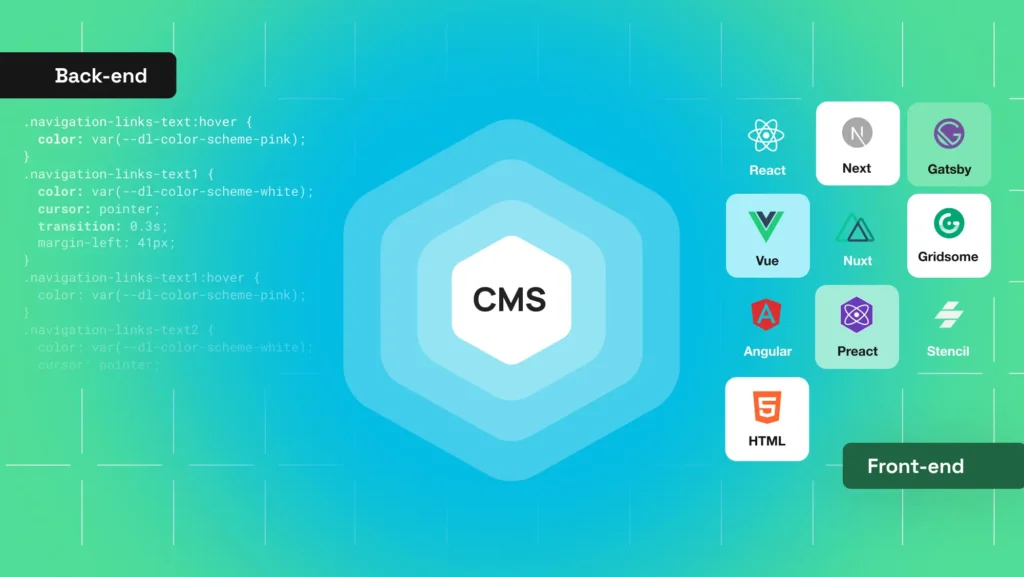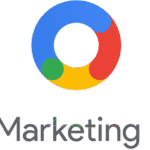Are you building with Next.js but feeling stuck on how to manage content effectively? You’re not alone. Developers love Next.js for its speed, SEO benefits, and flexibility — but without the right headless CMS, even the best codebase can feel like a maze to update.
That’s where choosing the best headless CMS for Next.js comes in. The right CMS won’t just store your content — it will supercharge your workflow, empower non-technical editors, and scale seamlessly as your project grows.
But with so many options (Contentful, Strapi, Sanity, Hygraph, and more), how do you know which one really fits your needs? Let’s break it down in plain language.
What is a Headless CMS?
Imagine this: your marketing team wants to update the homepage copy, but every change requires a developer. Frustrating, right?
That’s the problem a headless CMS solves.
A Headless CMS (Content Management System) is a back-end-only platform for managing content — without being tied to how or where that content appears.
In traditional CMS platforms like WordPress, the content and presentation layer are tightly coupled. But with a headless CMS, you get:
- A clean backend to create and manage content
- An API (usually REST or GraphQL) that delivers content to any frontend — like your Next.js app, a mobile app, or even a smartwatch
So instead of pushing content through a rigid template engine, you’re sending it wherever you need — fast, flexible, and future-proof.
Quick Comparison
| Feature | Traditional CMS | Headless CMS |
|---|---|---|
| Frontend included? | Yes | No |
| Flexibility across platforms | Limited | Fully flexible |
| Developer freedom (e.g. Next.js) | Constrained | Full control |
In short:
A headless CMS gives developers full control over the frontend, while editors get an easy interface to manage content.
Why Choose a Headless CMS for Next.js?
Next.js is built for performance, scalability, and developer flexibility — but to unlock its full potential, you need a content system that plays by the same rules.
Here’s why a headless CMS is the perfect match for Next.js:
1. Performance First
Next.js supports static site generation (SSG) and server-side rendering (SSR), both of which benefit from fast, API-delivered content. A headless CMS sends raw content via API — no heavy templating engines or database queries slowing things down.
2. Total Frontend Freedom
You’re not stuck with pre-built themes or outdated frontend stacks. With a headless CMS, your team can build custom UIs in React, tailor every interaction, and deploy to the edge — all without being boxed in by CMS limitations.
3. Multi-Platform Ready
Content doesn’t just live on websites anymore. A headless CMS allows you to reuse the same content on your Next.js site, mobile apps, digital signage, and more — from a single source of truth.
4. Easier Collaboration
Content editors work in a user-friendly interface, while developers focus on the frontend logic. No stepping on each other’s toes. Teams can ship faster with fewer bottlenecks.
5. Scales as You Grow
Whether you’re launching a blog or a multi-language SaaS site, headless CMSs offer structured content models, versioning, localization, and cloud scalability — all things Next.js handles beautifully on the frontend.
Key Considerations When Choosing the Best CMS for Next.js
Not all headless CMSs are created equal — especially when you’re building with a powerful framework like Next.js. To make the right choice, you need to go beyond brand names and look at how each CMS aligns with your project’s goals, team structure, and growth plans.
Here’s what to evaluate:
1. Developer Experience (DX)
Next.js developers want clean, predictable APIs. Look for:
- GraphQL or REST support
- TypeScript compatibility
- Good documentation and SDKs
- Local dev support and preview modes
If the CMS feels like a battle to integrate, it’s probably not the one.
2. Content Modeling Flexibility
Can you define custom content types and relationships easily?
The best CMS will let you:
- Create reusable blocks (e.g., CTAs, image galleries)
- Manage references and nesting without pain
- Update schemas without breaking your code
Avoid rigid systems that box you into their structure.
3. Editor Usability
It shouldn’t take a training course to update a blog post. Ask:
- Is the interface intuitive for non-technical users?
- Can editors preview content before publishing?
- Are roles and permissions clearly defined?
A CMS is only useful if your content team wants to use it.
4. Performance + API Response Times
Next.js is fast — your CMS shouldn’t be the bottleneck.
Check:
- How quickly the CMS delivers API responses
- CDN support for media and content
- Availability of on-demand revalidation or webhook triggers for ISR (Incremental Static Regeneration)
5. Scalability and Internationalization
As your app grows, can the CMS keep up?
- Multi-language and localization support
- Granular access control
- Versioning, audit logs, and backups
6. Hosting and Pricing
- Is it open-source and self-hosted (like Strapi), or SaaS (like Contentful or Sanity)?
- What’s the pricing model — usage-based, flat, or per-user?
- Are there usage caps on API requests, assets, or entries?
Plan for future costs, not just your MVP.
What Should I Keep In Mind While Choosing Next.js CMS Specifically For An E-commerce?
Running an e-commerce store isn’t just about content — it’s about speed, scale, and seamless product experiences. When pairing Next.js with a headless CMS for e-commerce, you need to think beyond blog posts and hero images.
Here’s what matters most:
1. Integration With Your Commerce Platform
Most headless CMSs don’t manage products or checkout natively — they integrate with platforms like:
- Shopify (via Storefront API)
- BigCommerce
- Snipcart
- MedusaJS or Commerce.js
Make sure the CMS can handle content while connecting smoothly to your product data. Look for built-in integrations or API compatibility.
2. Real-Time Updates & Incremental Static Regeneration (ISR)
In e-commerce, content changes fast — flash sales, price drops, inventory alerts.
Look for CMSs that:
- Trigger webhooks on content updates
- Support Next.js ISR (for automatic page regeneration)
- Offer real-time preview features
This ensures your product pages stay fresh without needing full rebuilds.
3. Structured Content for Product Storytelling
You’ll likely need:
- Rich product descriptions with embedded images or videos
- Cross-sells, upsells, reviews, badges
- Editorial content tied to categories or tags
Choose a CMS that allows flexible content modeling so your team can mix marketing and product data effectively.
4. Localization & Multi-Region Content
If you plan to sell globally, check for:
- Localization support (multi-language fields, region-specific content)
- Integration with translation workflows or services
- Multi-site or multi-channel delivery
Your CMS should scale with your market reach.
5. Performance at Scale
Next.js is fast, but e-commerce traffic can spike hard. You’ll need:
- A CMS with low-latency content delivery
- CDN support for both text and media
- Ability to cache or prefetch product-related data
Performance issues = lost sales.
6. Roles, Approvals, and Workflows
E-commerce teams are usually large:
- Marketers managing landing pages
- Designers editing visuals
- Legal reviewing copy
Your CMS should support:
- Custom roles and permissions
- Content approvals
- Scheduling for time-sensitive campaigns
Bonus Tip:
You may want to use a CMS only for marketing content (like homepage, about, blog, and landing pages) while keeping product data inside Shopify or your primary commerce engine. That’s a common and clean separation of concerns.
Best headless cms for nextjs

Choosing the best headless CMS for Next.js depends on your specific use case — whether you’re building a blog, a SaaS site, or a full-scale e-commerce platform. Below is a breakdown of the top options trusted by developers and content teams in 2025.
1. Sanity – Best Overall for Developer Experience
Why it stands out: Real-time collaboration, flexible content modeling, and excellent developer tooling.
Pros:
- First-class support for Next.js and ISR.
- Highly customizable schema using code.
- Real-time editing and live preview.
- Generous free tier.
Cons: - Steeper learning curve for beginners.
- Can get expensive at scale.
Best for: Agencies, editorial-heavy sites, and developer-focused teams.
2. Contentful – Best for Enterprise-Grade Projects
Why it stands out: Scalable API-first infrastructure, rich media handling, and strong role-based permissions.
Pros:
- Powerful content modeling UI.
- Supports localization and versioning.
- GraphQL API available.
- Excellent documentation and support.
Cons: - Expensive for large teams or traffic-heavy sites.
- Limited flexibility on lower pricing tiers.
Best for: Enterprises, international brands, and multi-region content teams.
3. Strapi – Best Open-Source & Self-Hosted Option
Why it stands out: Full control, self-hostable, and extendable via plugins.
Pros:
- 100% open-source under MIT license.
- Can be self-hosted or deployed on Strapi Cloud.
- Built-in role-based access control.
- REST and GraphQL APIs.
Cons: - Hosting and maintenance are your responsibility.
- Admin interface is less polished than SaaS options.
Best for: Developers who need control, and teams with strict compliance or privacy needs.
4. Hygraph (formerly GraphCMS) – Best for GraphQL-First Projects
Why it stands out: Designed from the ground up for GraphQL and complex structured content.
Pros:
- Native GraphQL support.
- Schema-driven, fast API.
- Supports localization and content workflows.
- Webhook support for ISR and automation.
Cons: - Content modeling UI can feel rigid.
- Usage-based pricing may scale quickly.
Best for: SaaS apps, multi-language sites, and developers who prefer GraphQL.
5. Builder.io – Best for Visual Page Building with React
Why it stands out: A drag-and-drop editor that works with custom React components and integrates cleanly with Next.js.
Pros:
- Visual editor for marketers and designers.
- Supports A/B testing and personalization.
- Seamless integration with custom code.
- Good for landing pages and dynamic layouts.
Cons: - Less suited for structured or deeply nested content.
- May be overkill for small or blog-style sites.
Best for: Marketing teams, landing page builders, and CRO-focused workflows.
How Taif help you choose best headless cms for nextjs?
Choosing the right headless CMS isn’t just a technical decision — it’s a strategic one. The wrong choice can slow your team down, limit growth, or break under traffic. That’s why businesses turn to Taif Marketing Agency to guide them toward the best solution for their unique needs.
Here’s how Taif helps you make the right call:
1. Deep Technical Analysis
Taif’s development team doesn’t just know Next.js — they live it. They assess your site’s architecture, performance requirements, and API needs to match you with CMSs that integrate seamlessly with your stack.
2. Content Workflow Mapping
Your CMS must work for your content team, not just your developers. Taif audits your content creation, publishing, and review workflows to recommend a CMS that supports your team — whether it’s visual editing, localization, or scheduling.
3. E-commerce & Custom Use Case Expertise
From headless Shopify setups to multilingual SaaS sites, Taif helps you weigh CMS options that support:
- Real-time previews
- On-demand ISR
- Product storytelling
- User-level permissions
- Custom APIs or webhook triggers
They don’t just suggest what’s popular — they recommend what performs.
4. Side-by-Side Comparisons
Taif provides easy-to-understand comparisons between top CMS platforms like Sanity, Strapi, Contentful, and Hygraph — breaking down pros, cons, pricing, and developer experience in plain language so you can make a confident decision.
5. Setup, Integration, and Training
Once you choose a CMS, Taif doesn’t leave you hanging. Their team handles:
- CMS configuration and API integration with Next.js
- Custom schema design
- Developer and editor onboarding
- Long-term support and optimization
Bottom line:
Taif Marketing Agency doesn’t just pick a CMS — they ensure it works for your business goals, your tech stack, and your team.
FAQ
1. What is the difference between a headless CMS and a traditional CMS?
A traditional CMS (like WordPress) combines content management and frontend rendering in one system. A headless CMS separates content from presentation — it provides content via API, allowing developers to build custom frontends with frameworks like Next.js.
2. Why should I use a headless CMS with Next.js?
Next.js is built for performance and flexibility. A headless CMS complements it by delivering structured content via API, enabling features like static site generation (SSG), server-side rendering (SSR), and incremental static regeneration (ISR).
3. Can I use WordPress as a headless CMS with Next.js?
Yes, WordPress can be used in “headless” mode by exposing content through the REST API or GraphQL (via plugins like WPGraphQL). However, purpose-built headless CMSs like Sanity or Strapi often offer a cleaner, more scalable experience for modern stacks.
4. What is the best free headless CMS for Next.js?
Strapi is one of the best open-source options — fully free if self-hosted. Sanity also offers a generous free tier for small projects, with real-time editing and structured content capabilities.
5. Is a headless CMS good for SEO with Next.js?
Yes — especially when paired with Next.js static or server-side rendering. A headless CMS lets you manage SEO metadata (titles, descriptions, OG tags) directly in the CMS, which can be rendered into HTML at build time for search engines to index.
6. Can I switch CMSs later if I outgrow one?
Yes, but with some effort. One of the benefits of using a headless CMS with Next.js is that the frontend and backend are decoupled. This means you can migrate content and APIs without rebuilding the entire site — but some reconfiguration will still be needed.
7. How does Taif Marketing Agency help with CMS migration or setup?
Taif handles the full process — from auditing your current system to recommending a CMS, migrating content, integrating APIs with your Next.js app, and training your team to manage content confidently post-launch.
Conclusion
Selecting the best headless CMS for Next.js isn’t just about features — it’s about finding the right fit for your team, your workflow, and your business goals. Whether you prioritize developer flexibility, editor experience, scalability, or seamless integration with e-commerce, the right CMS will unlock faster builds, smoother collaboration, and a better digital experience for your users.
Still unsure which one fits your project?
Taif Marketing Agency is here to guide you — from strategy and CMS selection to integration, content modeling, and long-term support. Let our experts help you launch faster, scale smarter, and focus on what matters most: creating value for your audience.
Ready to build something better with Next.js?
Reach out to Taif today — and let’s get your content stack future-ready.



